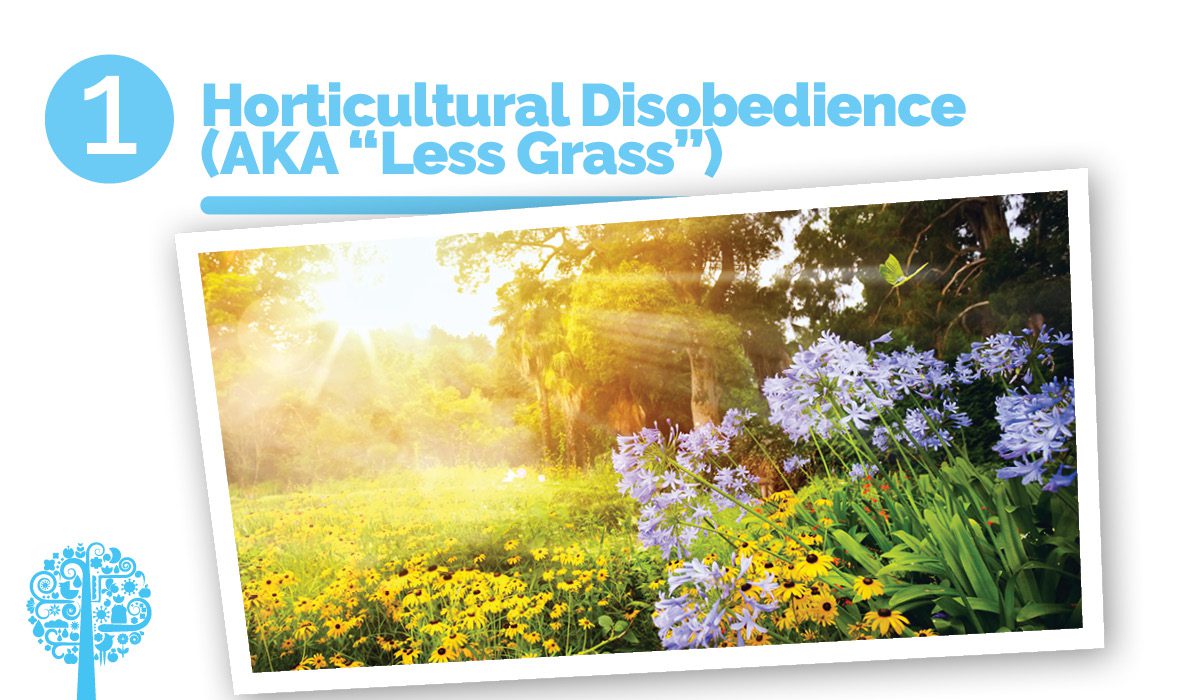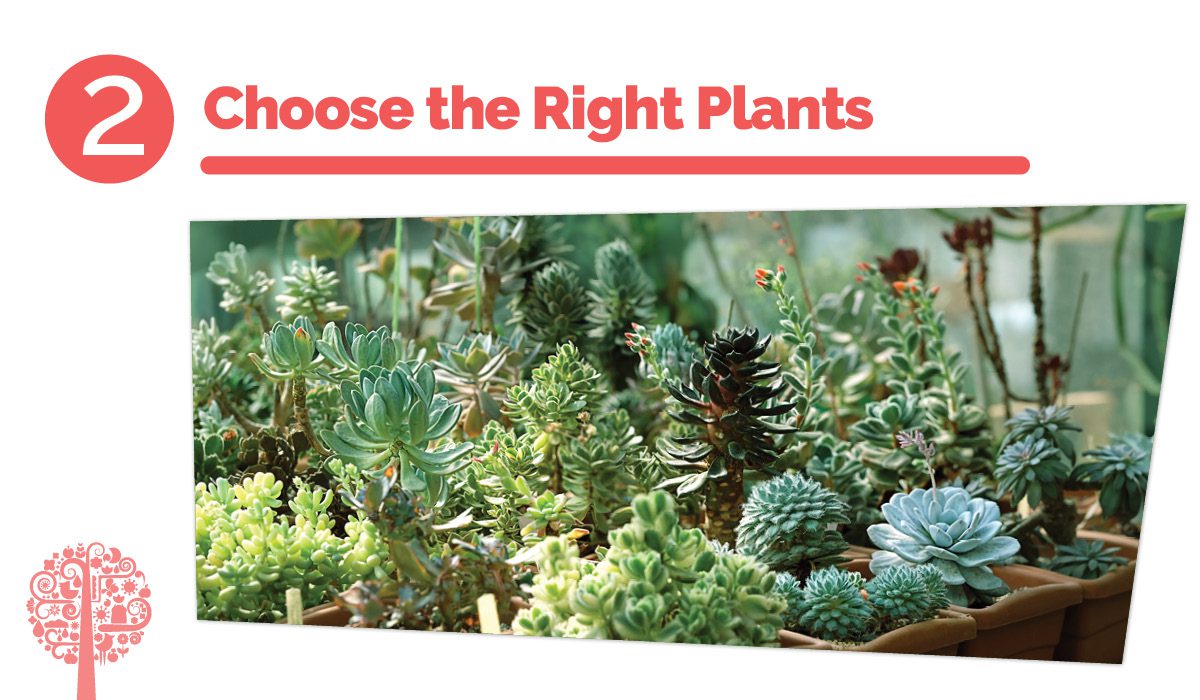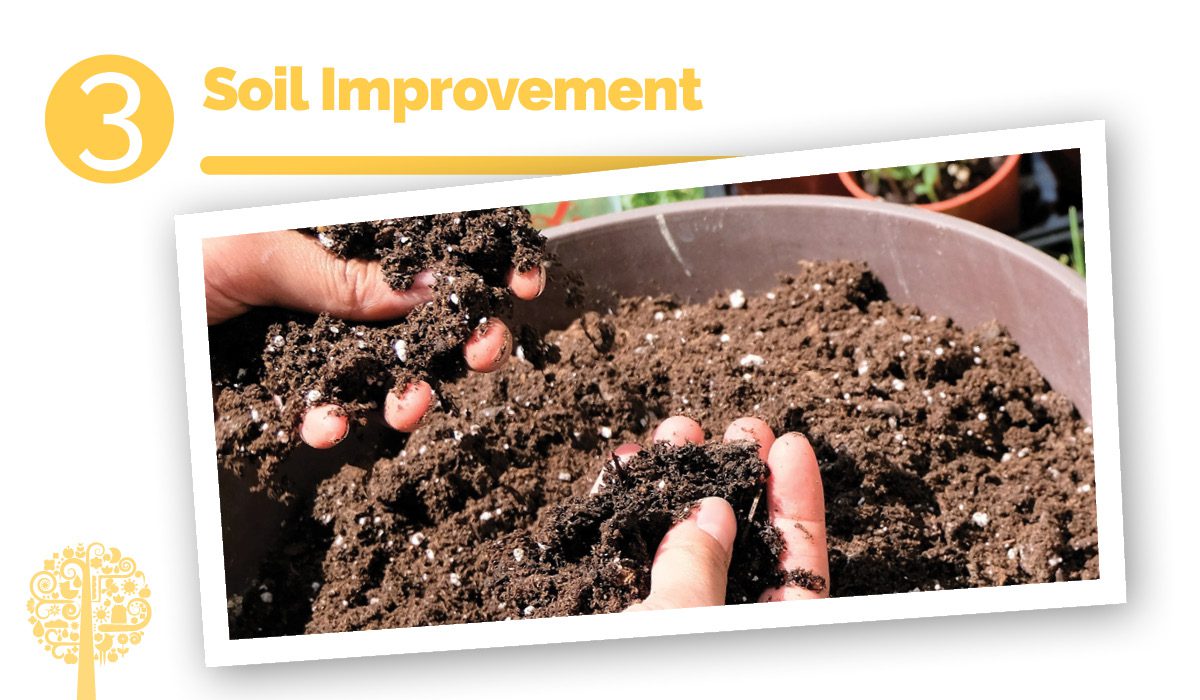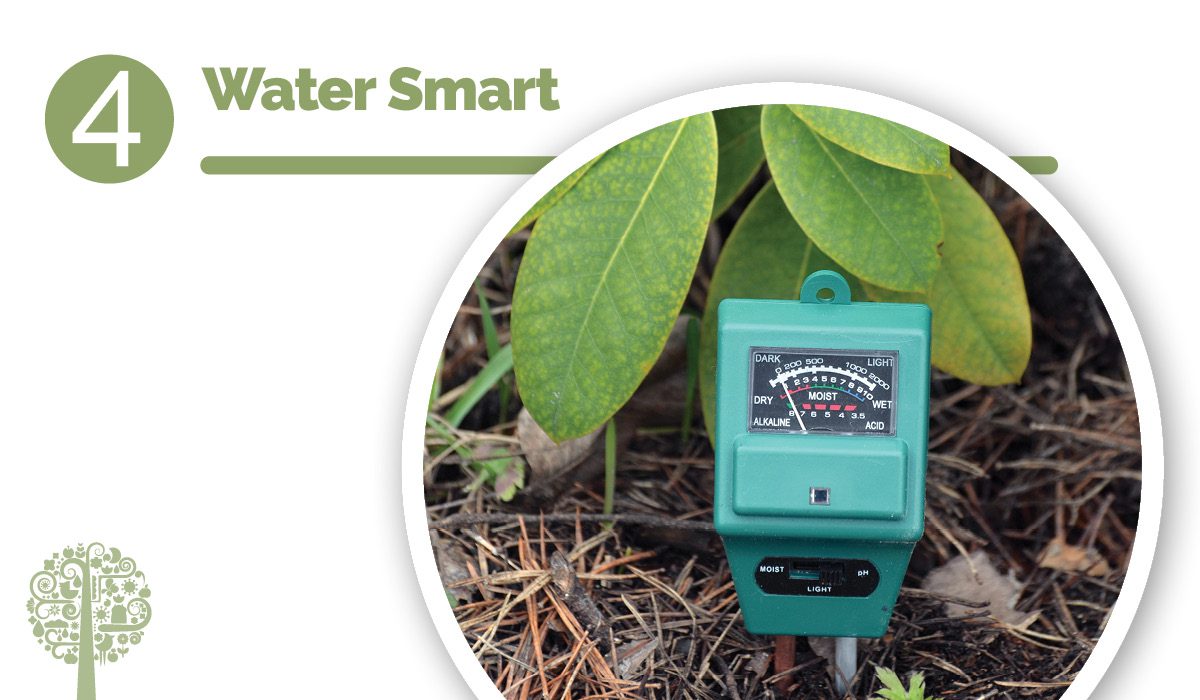We can all do a better job when it comes to conserving water, especially in the garden. It’s more important than ever to start making changes; this past summer, much of Europe and North America experienced record-breaking heat. Extreme temperatures and drought led to forest fires in many parts of the world, including Greece, California, and British Columbia. With many experts predicting summers will only be getting hotter and dryer, water-wise actions are necessary. Xeriscaping is an excellent way to conserve H20 out in the garden! Although more common in dry parts of the world where water use is regulated, this technique can be applied anywhere. Read these 5 Cool Ways Xeriscaping Works and see if you can incorporate one or two ideas into your growing ventures.
What does the term xeriscape mean? In Latin, xero means dry, and scape means landscape.
Horticultural Disobedience (AKA “Less Grass”)

Beautiful green lawns have traditionally surrounded our homes. While they look nice, they require a lot of water to keep their vibrant color. Consider replacing turfgrass with an eco-lawn, native grasses, low-maintenance groundcovers, or seed mix that doesn’t need to be mowed as often. Plant a bee lawn made up of low-growing wildflowers and clovers, which is not only water-wise but a haven for endangered pollinators too! Live in an area where city bylaws demand manicured lawns? For more rebellious folks, a new movement called “horticultural disobedience” has some homeowners replacing turf with natural yards to boost biodiversity while decreasing their water dependency and the urban heat island effect. Talk about living on the wild side!
Choose the Right Plants

Grow plants native to your area because they’ve adapted to the local climate and require much less water and maintenance. Go the extra mile by selecting shrubs and flowers that do well in hot and dry conditions, such as desert, seashore, and Mediterranean plants. Carefully read the labels at your local nursery; is the object of your affection drought-tolerant? If so, it’s a winner for the xeriscaped garden.
Soil Improvement

While plant selection certainly is vital to proper xeriscaping (read above), perhaps you don’t want to limit yourself to a few drought-tolerant and native plants. If you’re looking to add unique varieties to the garden but don’t want to increase your water use, you must improve your soil by adding good quality compost and disturbing it as little as possible. The soil’s texture will determine drainage and retention capabilities, and in turn, how much H20 is available to plants. Add a 3” layer of compost in the spring before planting and again after the growing season is over. Mixing organic matter into the garden at the time of planting doesn’t hurt either. And of course, don’t forget to mulch! Adding layers of leaves, bark, or straw to your garden beds will prevent soil erosion and water evaporation.
Water Smart

Are your plants actually thirsty? Don’t just assume that they need water. Using a moisture meter will help gauge whether the garden needs a drink or not. This handy gadget can save you some work and help improve plant health, as too much moisture isn’t a good thing. When you grab the hose, make sure you’re using it early in the day or in the evening hours when the sun isn’t as hot, and evaporation levels are lower. Water deeply and efficiently utilizing the puddling method. Drench the soil around the plant to create a puddle and count how long it takes to absorb. If the ground drinks up all of the water in less than three seconds, water again. Any longer, and you can move on to the next thirsty plant. Finally, a rain barrel is excellent for capturing rainwater for the gardens and saving your drinking water.
Maintain Your Gardens

It’s easy enough to let things go in the garden, but regular maintenance is a xeriscaper’s best friend. Healthy plants cope much better with less water than unhealthy plants. That means keeping up with your weeding, pruning, fertilizing, mulching, and lawn care. Weeds rob nutrients and moisture from the plants you’re actually trying to grow, so regularly going through the garden and eliminating them is a must. Prevent them from popping up by following no-till or no-dig methods and covering your beds with mulch. Fertilize plants only when necessary, as nitrogen encourages new growth, increasing a plant’s need for water. Prune trees and shrubs in the spring; doing so in the summer encourages new foliage to grow, which is always thirstier than mature leaves. Follow a regular maintenance routine, and you’ll be the gardener with the nicest-looking and most water-wise garden on the block!
Other xeriscaping techniques:
-
Replace grass with hardscapes, such as decking, pathways, patios, and more.
-
Install windbreaks to help keep plants from drying out too quickly.
-
Design a garden with materials such as gravel or stone to help rainwater penetrate the ground and keep it from washing away.
Sources:
Gardening Complete: How To Best Grow Vegetables, Flowers, and Other Outdoor Plants, by the Authors of Cool Springs Press (Cool Springs Press, 2018).